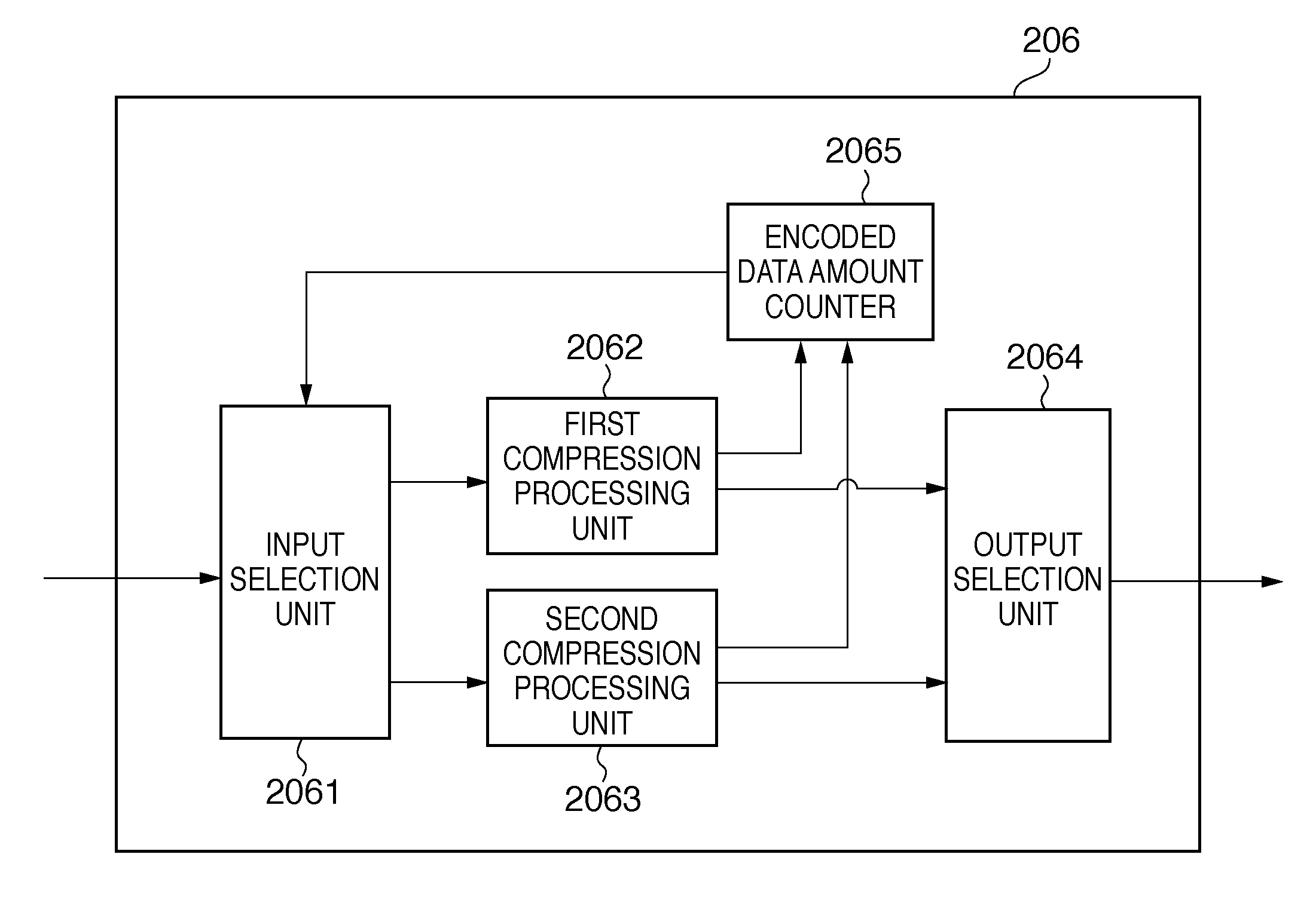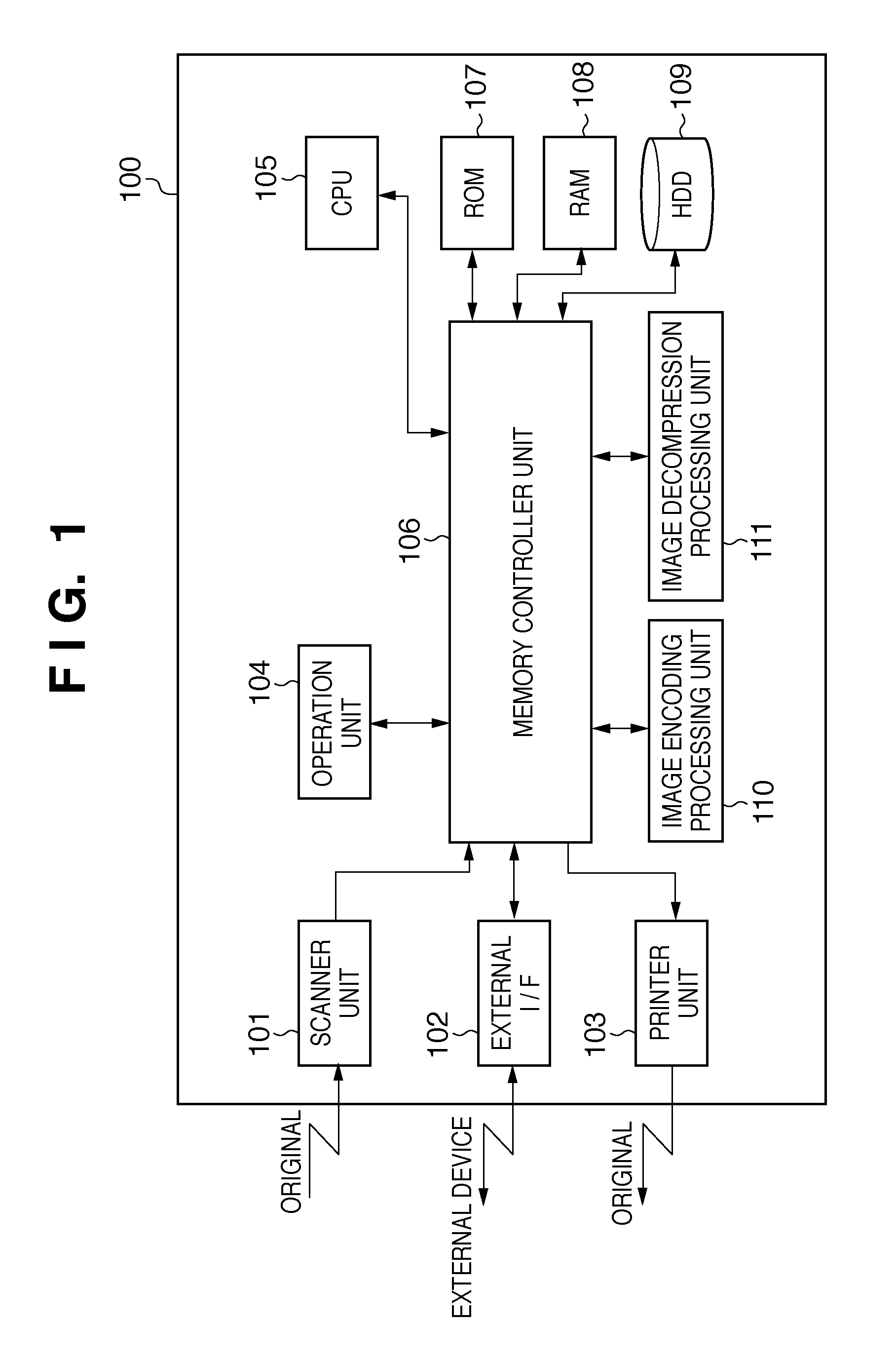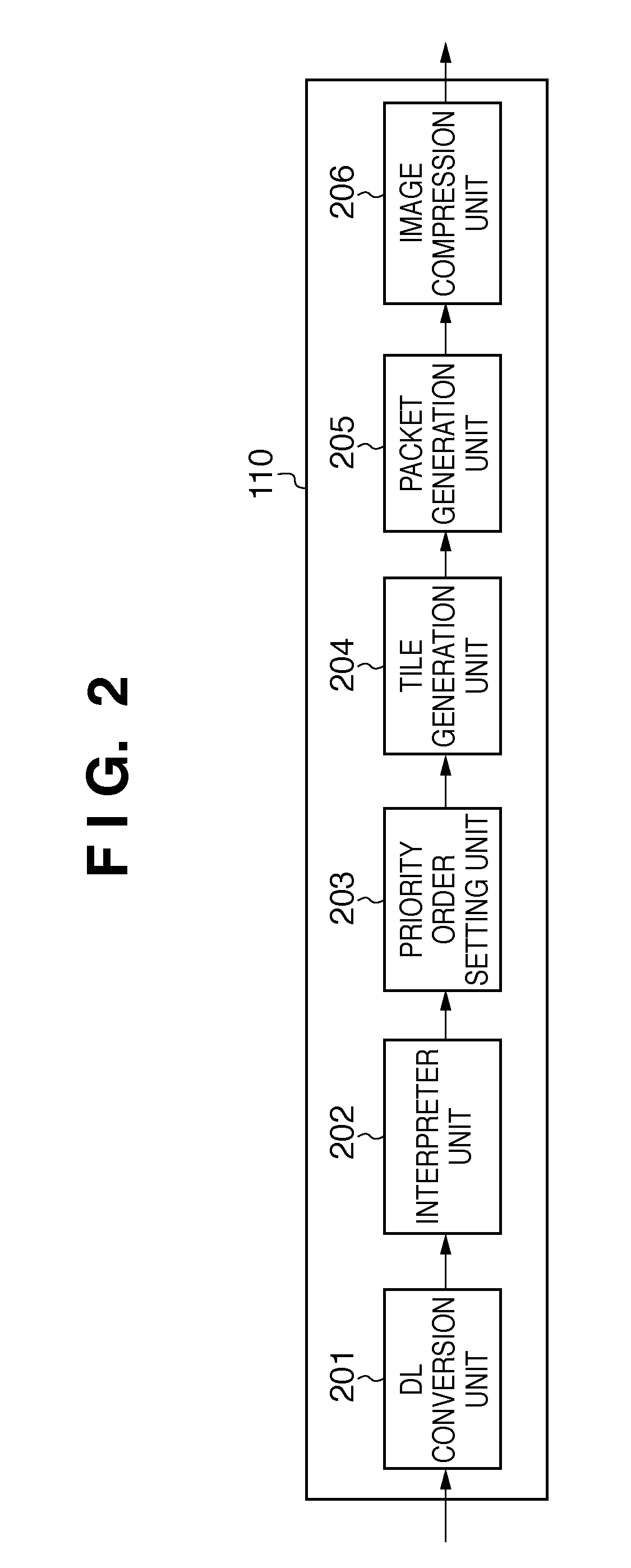Image processing apparatus, control method for the same, program
- Summary
- Abstract
- Description
- Claims
- Application Information
AI Technical Summary
Benefits of technology
Problems solved by technology
Method used
Image
Examples
embodiment 1
[0031]Configuration of Image Processing Apparatus
[0032]Below is a description of Embodiment 1 with reference to FIGS. 1 to 12. First, a description of the configuration of an image processing apparatus according to the present embodiment is given with reference to FIG. 1. The image processing apparatus according to the present embodiment is described taking the example of a multi-function peripheral (MFP). An MFP 100 is an image processing apparatus including a plurality of functions such as a copy function for printing job data that has been output from a scanner and stored in a memory, and a print function for printing job data that has been output from an external apparatus such as a computer and stored in a memory. The MFP 100 can be a full-color device or a monochrome device, and the basic configuration of a full-color device is often the same as that of a monochrome device, with the exception of color processing, internal data, and the like. The following description therefore...
embodiment 2
[0061]Next is a description of Embodiment 2 with reference to FIGS. 13 to 15. A feature of the present embodiment is that if the target of compression is an image having a high amount of change in image pixel values, such as when a large number of characters exist in tile images, the compression rate is raised in order to compress the image so as to fall within a target memory capacity. Note that the following description focuses mainly on aspects of the configuration and technology that are different from Embodiment 1. In the present embodiment, the interpreter unit 202 creates a Q table ID list that is used for selecting the quantization table to be used by the image compression unit 206.
[0062]First is a description of an example of a tile image to which the processing of the present embodiment is applied with reference to FIG. 13. The tile image shown in FIG. 13 has 0, 0, 5, 9, 9, 5, 9, 8, 0, and 0 edges in lines 0 to 9 respectively, and the total number of edges in the lines is ...
embodiment 3
[0066]Below is a description of Embodiment 3 with reference to FIGS. 16 to 18. When encoding image data, the same encoding processing is generally performed without giving consideration to image attributes. For this reason, the encoded data amount allocated in a memory region is currently the same for unimportant tile images and important tile images. In view of this, reducing the encoded data amount of the unimportant tile images and allocating the thus saved amount to the encoded data amount of important tile images enables efficient utilization of memory capacity and enables performing control so as to improve image quality. In Embodiment 1, the encoded data amount is adjusted by generating image attribute information and setting a priority order for each tile image. However, since a threshold is set is advance in this method, there are cases where the memory region cannot be fully utilized.
[0067]As one example, assume the case of an image whose tile images are 20% solid images a...
PUM
 Login to View More
Login to View More Abstract
Description
Claims
Application Information
 Login to View More
Login to View More - R&D
- Intellectual Property
- Life Sciences
- Materials
- Tech Scout
- Unparalleled Data Quality
- Higher Quality Content
- 60% Fewer Hallucinations
Browse by: Latest US Patents, China's latest patents, Technical Efficacy Thesaurus, Application Domain, Technology Topic, Popular Technical Reports.
© 2025 PatSnap. All rights reserved.Legal|Privacy policy|Modern Slavery Act Transparency Statement|Sitemap|About US| Contact US: help@patsnap.com



